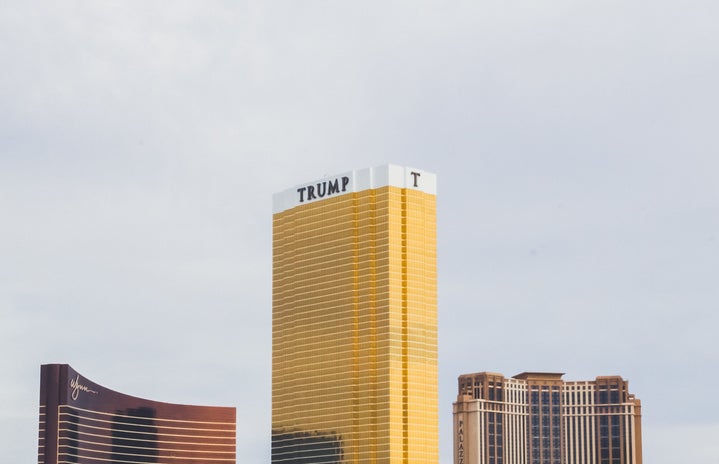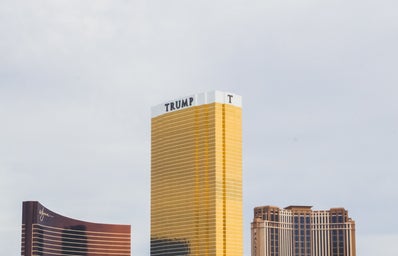This article is written by a student writer from the Her Campus at La Verne chapter.
Executive orders have been around as long as our constitution and have been used by presidents from George Washington to Obama. The term has recently gained notoriety with President Trump’s highly controversial Travel Ban. This controversy has some wondering if President Trump really has the power to call for a “travel ban” and others wondering what an “executive order” actually means.
Although there is no direct statement about executive orders in the Constitution, their power is alluded in Article II, Section I with the statement, “executive power shall be vested in a President of the United States of America.”
All executive orders are able to be overturned by judicial review if they do not have constitutional support or are enacted by the congress in statutes. The legislative branch does not need to approve executive orders and cannot overturn orders, but they are able to cut spending to executive orders. However, these budget cuts can still be vetoed by the president. The White House can overturn previous orders, and this is usually done by new administration to orders by previous administrations. Here are some examples of previous executive orders:
Executive orders do have high power over internal affairs of government such as enforcing legislation that is enforced, federal officers and other similar actions.
There are over 13,000 forms of executive orders spanning over US history and 12 of them have been from Donald Trump, so far.
Here is what you need to know about the 12 executive orders of 2017.
(As of February 10th, 2017)
1. Minimizing the Economic Burden of the Patient Protection and Affordable Care Act Pending Repeal
Signed: January 20, 2017
“prompt repeal of the Patient Protection and Affordable Care Act… minimize the unwarranted economic and regulatory burdens of the Act, and prepare to afford the States more flexibility and control to create a more free and open healthcare market.”
2. Expediting Environmental Reviews and Approvals for High Priority Infrastructure Projects
Signed: January 24, 2017
“strengthen our economic platform, makes America more competitive, creates millions of jobs, increases wages for American workers, and reduces the costs of goods and services for American families and consumers… infrastructure projects in the United States have been routinely and excessively delayed by agency processes and procedures… To that end, it is the policy of the executive branch to streamline and expedite, in a manner consistent with law, environmental reviews and approvals for all infrastructure projects, especially projects that are a high priority for the Nation, such as improving the U.S. electric grid and telecommunications systems and repairing and upgrading critical port facilities, airports, pipelines, bridges, and highways.”
3. Enhancing Public Safety in the Interior of the United States
Signed: January 25, 2017
“Interior enforcement of our Nation’s immigration laws”
4. Border Security and Immigration Enforcement Improvements
Signed: January 25, 2017
“Aliens who illegally enter the United States without inspection or admission present a significant threat to national security and public safety… The purpose of this order is to direct executive departments and agencies to deploy all lawful means to secure the Nation’s southern border, to prevent further illegal immigration into the United States, and to repatriate illegal aliens swiftly, consistently, and humanely.”
5. Protecting the Nation From Foreign Terrorist Entry Into the United States
Signed: January 27, 2017
“In order to protect Americans, the United States must ensure that those admitted to this country do not bear hostile attitudes toward it and its founding principles. The United States cannot, and should not, admit those who do not support the Constitution, or those who would place violent ideologies over American law…. the United States should not admit those who engage in acts of bigotry or hatred (including “honor” killings, other forms of violence against women, or the persecution of those who practice religions different from their own) or those who would oppress Americans of any race, gender, or sexual orientation.”
6. Ethics Commitments by Executive Branch Appointees
Signed: January 28, 2017
“Every appointee in every executive agency appointed on or after January 20, 2017, shall sign, and upon signing shall be contractually committed to [this Ethics Pledge].”
7. Reducing Regulation and Controlling Regulatory Costs
Signed: January 30, 2017
“It is the policy of the executive branch to be prudent and financially responsible in the expenditure of funds, from both public and private sources… it is important that for every one new regulation issued, at least two prior regulations be identified for elimination, and that the cost of planned regulations be prudently managed and controlled through a budgeting process.”
8. Core Principles for Regulating the United States Financial System
Signed: February 03, 2017
“It shall be the policy of my Administration to regulate the United States financial system in a manner consistent with the Core Principles:
(a) empower Americans to make independent financial decisions and informed choices in the marketplace, save for retirement, and build individual wealth;
(b) prevent taxpayer-funded bailouts;
(c) foster economic growth and vibrant financial markets through more rigorous regulatory impact analysis that addresses systemic risk and market failures, such as moral hazard and information asymmetry;
(d) enable American companies to be competitive with foreign firms in domestic and foreign markets;
(e) advance American interests in international financial regulatory negotiations and meetings;
(f) make regulation efficient, effective, and appropriately tailored; and
(g) restore public accountability within Federal financial regulatory agencies and rationalize the Federal financial regulatory framework.”
9. Providing an Order of Succession Within the Department of Justice
Signed: February 09, 2017
Order of Succession. “The following officers, in the order listed, shall act as and perform the functions and duties of the office of Attorney General… [if the Attorney General] died, resigned, or otherwise become unable to perform the functions and duties…
(a) United States Attorney for the Eastern District of Virginia;
(b) United States Attorney for the Northern District of Illinois;
(c) United States Attorney for the Western District of Missouri”
10. Enforcing Federal Law with Respect to Transnational Criminal Organizations and Preventing
Signed: February 09, 2017
“Transnational criminal organizations…drug cartels, have spread throughout the Nation, threatening the safety of the United States and its citizens… the trafficking by cartels of controlled substances has triggered a resurgence in deadly drug abuse and a corresponding rise in violent crime related to drugs… A comprehensive and decisive approach is required to dismantle these organized crime syndicates and restore safety for the American people.”
11. Preventing Violence Against Federal, State, Tribal, and Local Law Enforcement Officers
Signed: February 09, 2017
“It shall be the policy of the executive branch to:
(a) enforce all Federal laws in order to enhance the protection and safety of Federal, State, tribal, and local law enforcement officers, and thereby all Americans;
(b) develop strategies, in a process led by the Department of Justice (Department) and within the boundaries of the Constitution and existing Federal laws, to further enhance the protection and safety of Federal, State, tribal, and local law enforcement officers; and
(c) pursue appropriate legislation, consistent with the Constitution’s regime of limited and enumerated Federal powers, that will define new Federal crimes, and increase penalties for existing Federal crimes, in order to prevent violence against Federal, State, tribal, and local law enforcement officers.”
12. Task Force on Crime Reduction and Public Safety
Signed: February 09, 2017
“It shall be the policy of the executive branch to reduce crime in America… The Department of Justice shall take the lead on Federal actions to support law enforcement efforts nationwide and to collaborate with State, tribal, and local jurisdictions to restore public safety to all of our communities.”


